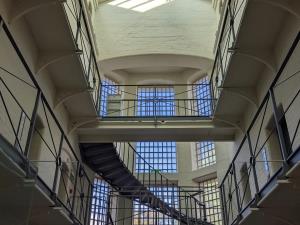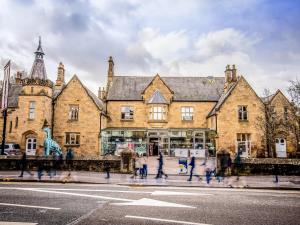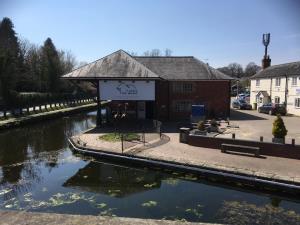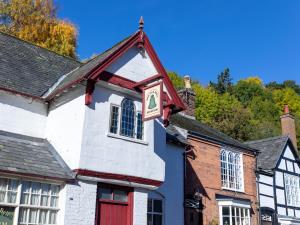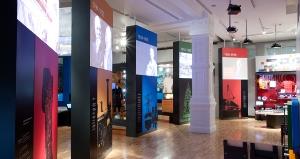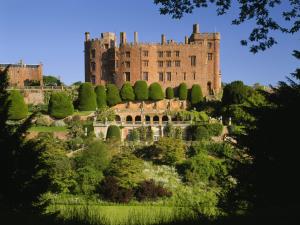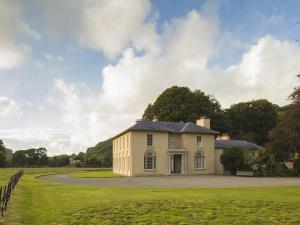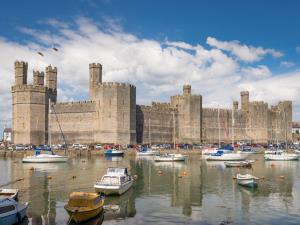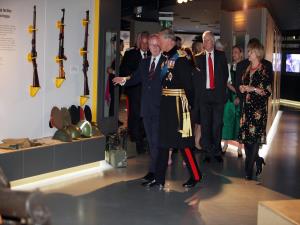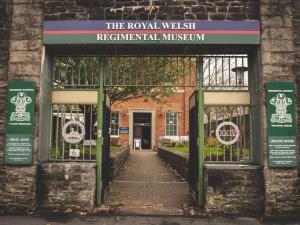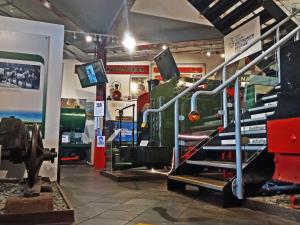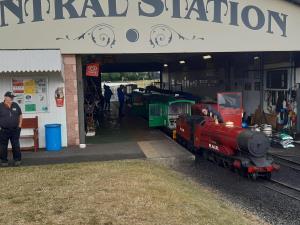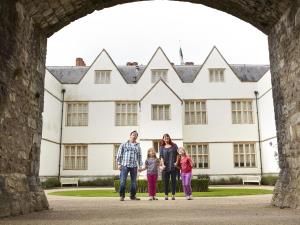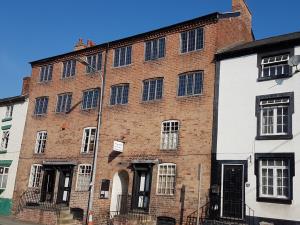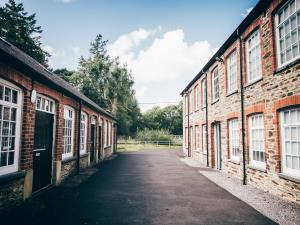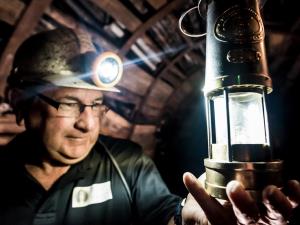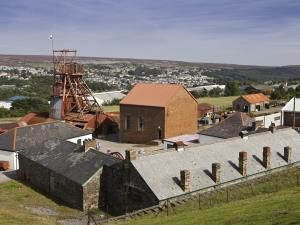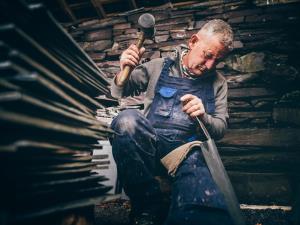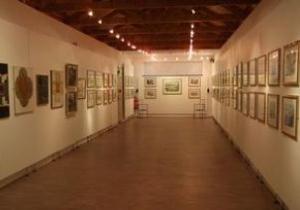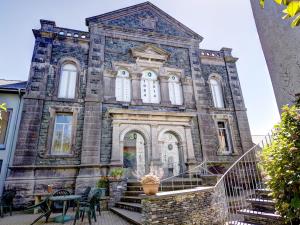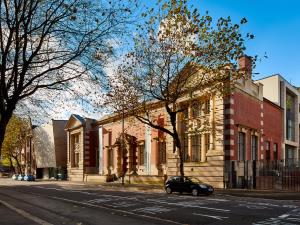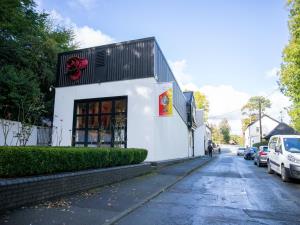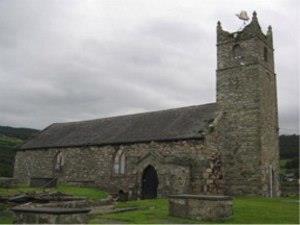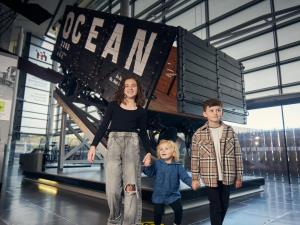Most people automatically associate the landscape and people of Wales with a wealth of historical sites just waiting to be explored. But the museums of Wales are finely poised to tell all those stories, whether you’re enticed by our towering National Museums or the singular, smaller heritage venues. Wales has over 90 accredited museums, ranging from industrial heritage, to textiles, fine art and treasures from around the world. It's impossible to feature them all - here's a selection to get you started!
Local history museums
Intrigued about the history of the local area? Many of our museums tell the stories of their towns and communities. Some are run by local authorities, some are independently run by volunteers. Whichever you visit, you’ll be amazed at the range of exhibits, events and activities on offer.
It’s hard to imagine a building more intriguing and atmospheric than Ruthin Gaol, the North Wales prison where thousands were incarcerated between the mid-17th and early 20th centuries. The Judge's Lodgings in Presteigne, Powys, shows the other side of the law and visitors can explore the house and sit in the judge's chair.


Wrexham County Borough Museum and Archives was built as a militia barracks and was once home to the local constabulary and also the courtroom. Now you can discover the history of Wrexham, visit one of the varied exhibitions or book into one of the children’s workshops.
Powysland Museum, right next to the canal in Welshpool, makes for an enlightening visit to find out more about the region. There’s a chronological vault of archaeology on the first floor which takes in Neolthic farmers, the arrival of the Romans, Viking attacks and the religious history of locals. Railway enthusiasts will enjoy the Cambrian Railways artifacts. Downstairs, you'll find Welshpool's library.


The Old Bell Museum, in Montgomery, Powys, was an inn during the 16th century. It now illustrates the story of Montgomeryshire in beautiful detail across 11 rooms.
Perhaps your first port of call in Cardiff should be to the Museum of Cardiff, a city centre museum in the historic Old Library building in The Hayes. This modern museum charts the transformation of the capital from a small medieval market town to an industrial leading light and the impressive modern city it is today.
Further up the Valleys in New Tredegar, the award winning Winding House Museum offers plenty to do. They run the original Victorian winding engine on the last Saturday of each month – impressive!

National Trust museums
With dozens of locations across Wales, from stately homes and castles, to estates, coastline and open countryside, the National Trust is responsible for maintaining some of Wales’ most prized cultural, historic and ecological locations. And many of these locations are also home to museums, including the Clive Museum at Powis Castle. There are more than 300 items from India and the Far East on display, dating from the 17th to the 19th centuries, including ivories, textiles, statues of Hindu gods, ornamental silver and gold, weapons and ceremonial armour.
Find out how the 'other half' lived at the magnificent Erddig estate near Wrexham or re-live the countryside gentry life at Llanerchaeron in the hills above Cardigan Bay.


Regimental museums
Wales has a proud military heritage which is showcased in a number of regimental museums dotted around the country. Find out more at the Royal Welch Fusiliers Regimental Museum in Caernarfon, Firing Line: Cardiff Castle Museum of the Welsh Soldier and the Regimental Museum of the Royal Welsh in Brecon, which opened in 1935 and is recognised as one of finest regimental museums in Britain.


Railway museums
Largely due to our epic industrial heritage, Wales has historically relied on railways to deliver our wealth and raise our global profile. In the nineteenth century numerous railways were built to export coal and iron from South Wales and slate from North Wales. And in the latter half of the century, tourism was booming and railways served resorts such as Llandudno, Barry Island and locations along the Cambrian Coast Line.
Many of these railways have of course since closed however, along with an impressive network of narrow gauge and miniature railways, Wales’ railway culture is still strong. Much of its history is recorded in a number of railway museums around the country, including the Narrow Gauge Railway Museum in Tywyn and Rhyl Miniature Railway Museum.

Folk museums
One of Wales’ best known and much loved museums is the St Fagans National Museum of History, an open air museum chronicling the historical lifestyle, culture, and architecture of the Welsh people through the ages. The museum stands in the grounds of the magnificent St Fagans Castle and gardens, a late 16th-century manor house donated to the people of Wales by the Earl of Plymouth in 1948. Since then more than forty original buildings from different historical periods have been re-erected in the 100-acre parkland, among them houses, a farm, a school, a chapel and an impressive Workmen's Institute.



Textile museums
It’s fair to say that Wales has its fair share of sheep, meaning that among other things, wool has always been one of our finest exports and Welsh blankets are renowned the world over as the epitome of luxe. And this great heritage has been recorded at a number of textile focused museums around the country, including Newtown Textile Museum and the National Wool Museum in Llandysul, which is home to some impressive historic machinery. A raised walkway gives a unique view of textiles in production at Melin Teifi, the site's commercial woollen mill, while the Textile Gallery displays aspects of the National Flat Textile Collection.
Industrial heritage museums
Wales’ industrial heritage is world renowned, with iron, slate and coal forming the backbone of a country that made its name during the Industrial Revolution. And much of this incredible period in time is celebrated at a number of industrial heritage museums that are dotted around the country, from the South Wales Miners Museum, A Welsh Coal Mining Experience and Big Pit National Coal Museum in the south, to the National Slate Museum in Llanberis in the north.


Art museums
With such a rich and varied landscape and cultural heritage it’s no wonder that Wales has spawned generations of artists, or attracted them to our shores via our reputation for championing the arts. And this rich artistic character is displayed in a large number of art museums across the country, from smaller locations like Tenby Museum and Art Gallery, to the Museum of Modern Art in Machynlleth and the recently refurbished Glynn Vivian Art Gallery in Swansea.
The Andrew Logan Museum of Sculpture in Berriew, near Welshpool, is the only museum in Europe dedicated to a living artist.


Maritime museums
Being part of the wider island of the United Kingdom, with coastline on its northern, western and southern borders, Wales has always had a special relationship with the sea. And in the nineteenth century thanks to the unparalleled growth of the coal industry, Cardiff become the boom town of Victorian Britain, if not the world. As a result Cardiff Docks became central to the world’s heavy shipping industry and at its peak, the port was one of the largest dock systems in the world with a total quayage of almost 7 miles.
Much of this heritage, and more from centuries past, is recorded at a number of maritime museums around the country, including the Porthmadog Maritime Museum, Holyhead Maritime Museum, Llŷn Maritime Museum and Heritage Centre in Nefyn and the National Waterfront Museum in Swansea.

University museums
University museums comprise only a small proportion of the museum sector, but there are some gems in Wales that really should not be missed. Take for example the Egypt Centre in Swansea, which houses the largest collection of Egyptian antiquities in Wales.
Then there's Aberystwyth University's School of Art Museum and Galleries, which can be found in a magnificent Edwardian Grade II listed building in its own grounds on the Buarth Hill, overlooking Cardigan Bay.
The University of South Wales Art Collection has fully Accredited Museum Status and consists of a variety of types of artwork produced since 1910, focusing principally upon the visual culture of south Wales mainly since 1939.


